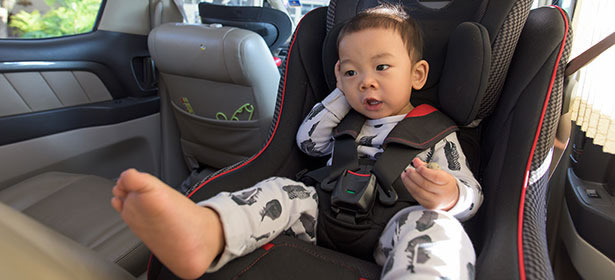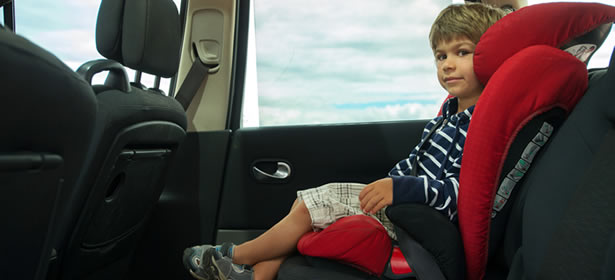Car seats can reduce the risk of death by as much as 71% – so why are more than 92% of South African children not transported in car seats?
Since 2015, it has been law that children under the age of three must be strapped into a car seat while travelling in a moving vehicle. Statistics show that a child has a 71% chance of surviving an accident when strapped into a fitted car seat. But how often have you seen kids bobbing around on the back seats and waving at you as you pass by? It certainly warms the heart but the reality is that parents are placing their kids in danger by not bucking them up.
A 2015 study published in Paediatrics’ showed that a newborn to 3 years old sitting in the centre rear seat is 43% safer than sitting on the side at the back.
“In many instances, children are sitting in the front passenger seat without seat belts, standing in the car while it’s moving or, at the very least, are not in an age, weight and height-appropriate car seat,” the Automobile Association (AA) of South Africa said when releasing their report in 2016.
Rear-facing car seats
Neonates and infants should be restrained in a rear-facing car seat, suitable for their weight until they exceed weight/ height limitations, usually at around one to two years old or 9kg, advised Dr Robyn Holgate, ER24’s chief medical officer. This is to avoid the risk of a cervical spine injury should they be in an accident.
The mistake that many parents make is to place the car seat either on the left or the right side of the back seat.
The problem with vehicles manufactured in SA is that they only have LATCHatch (lower anchors and tethers for children) for the two side seating positions in the back seat. If this is the case, parents can use the seatbelt to install the car seat in the centre position.

Forward-facing car seats
Toddlers should be secured in forward facing car seats appropriate for their height and age. With some car seats, it’s a matter of converting a forward-facing seat with a 5-point harness and top tether. Your child may need a forward-facing car seat with a harness that has a higher weight or height limit before moving to a booster seat.

Booster seats
Children seated in a booster seat in the back seat of the car are 45% less likely to be injured in a crash than children using a seat belt alone, says Safe Kids Worldwide.
AA spokesperson, Leyton Beard stresses the importance of strapping a child in a booster seat, saying “if a child is 1.3m or shorter, the seat provides additional lift”.
A school-going child should remain in a booster seat until the age of 5 to 12 or a height of 1.4m. This is to ensure the car’s seat belt fits appropriately over their chest and thighs.

Seat belts
Children who are tall enough to wear an adult seat belt should still ride in the back seat until they are 13 years of age. Adjust the seat belt so the lap belt crosses the child’s upper thighs and the diagonal belt crosses the upper chest at a point between the neck and shoulder.
So, go ahead and make sure that your child has the correct seat, that it is installed correctly and that it is of the correct type of seat for your child’s age and height. Keep your child safe while travelling and rest assured that Beame will keep you simply sorted.
For more information about Beame’s value-added services, visit the Beame website or contact our Customer Care team on 0860 23 26 31.